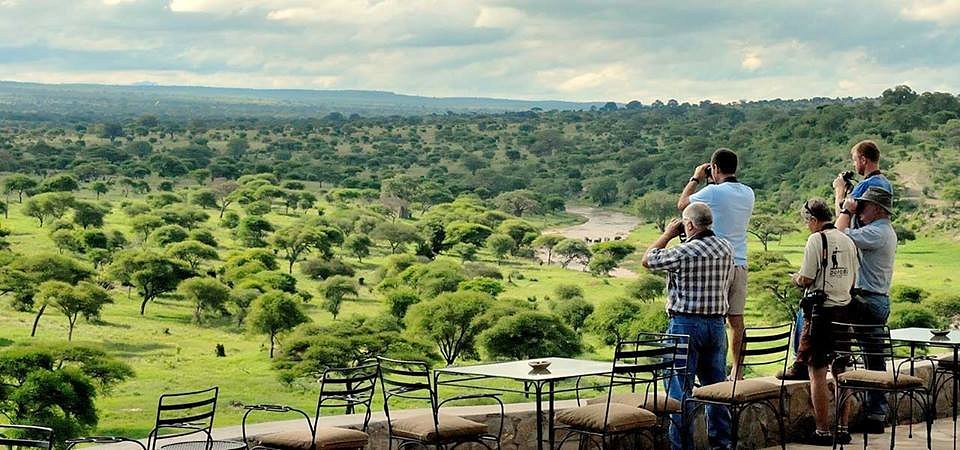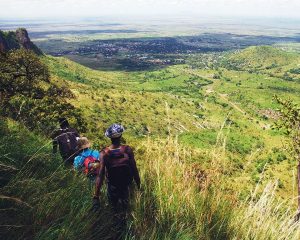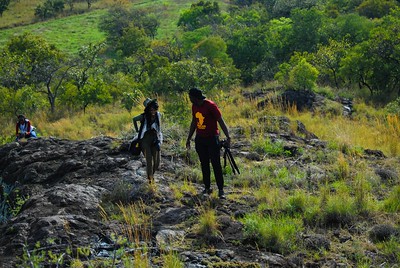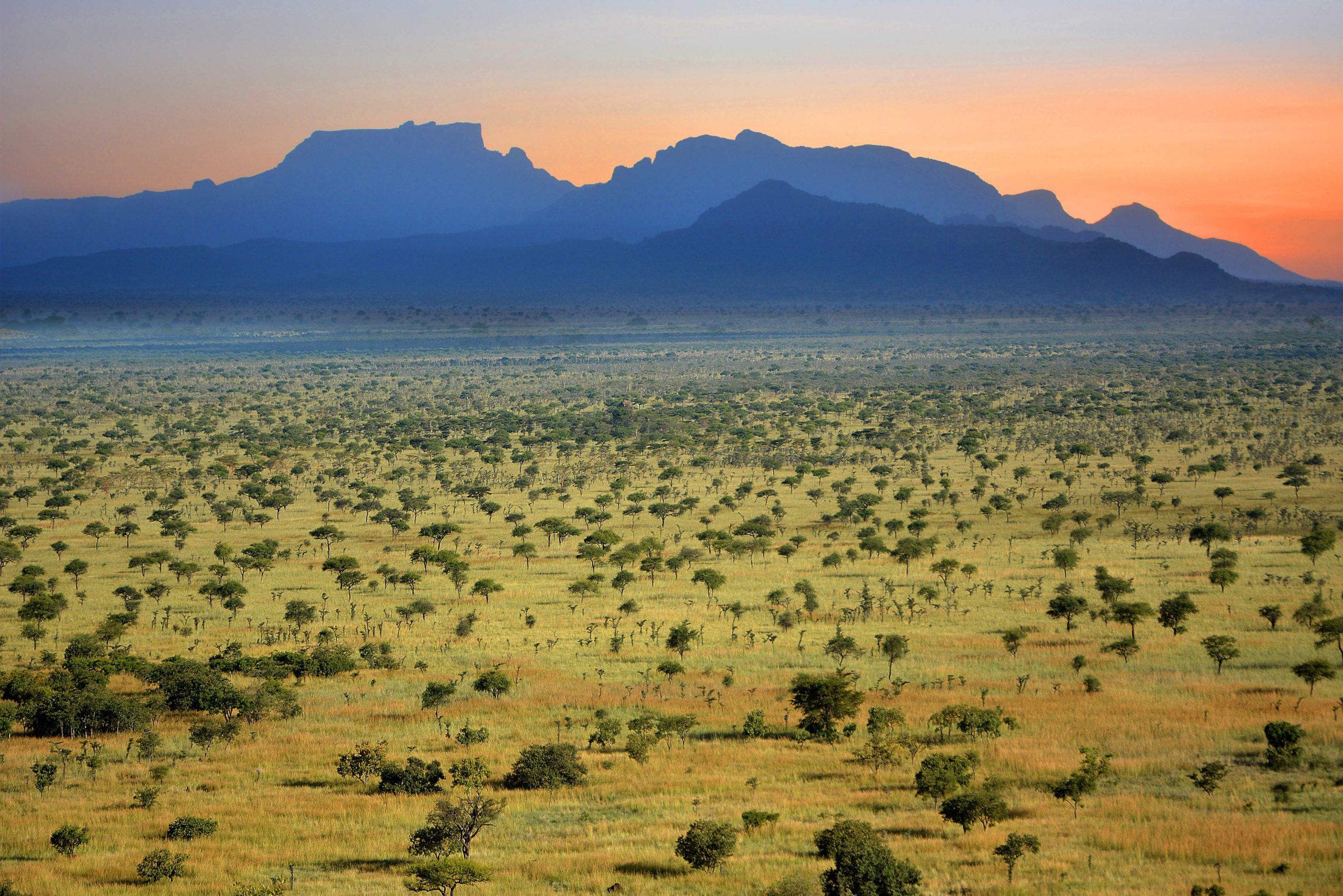Table of Contents
Pian Upe Game Reserve
Looking for a thrilling and perfect area for adventure, Pian Upe Game Reserve is one of the most interesting areas to visit.
Pian Upe Game Reserve is the second largest national protected area after Murchison Falls National Park covering area of 2088 square kilometers, situated in Northern Uganda in Nakapiripirit district in the North of Mount Elgon in Karamoja region. Pian Upe National Reserve has diverse number of wildlife both animals and plants.

1. Discover Pian Upe Wildlife Reserve
Pian Upe National reserve is one of the best wild safari destination in Uganda with its stunning land scape ,and beautiful wildlife ,which gives you the most interesting game drives in t he reserve .it also have a very beautiful scenic beauty with surrounding mountains for example Mount Elgon in the north and Napedet in the south this supported activities such filming and photography and enjoying and appreciating the Nature.
2. Location of Pian Upe National Reserve
Pian Upe National Reserve is located in Northern Eastern Uganda Nakapiripirit District in Karamoja region with total of 8 districts closely to the game reserve by means of road transport from Kampala capital city by the way of Mbale -soroti road about 8-9 hours drive.
3. History Of Pian Upe National Reserve
Pian Upe Wildlife Reserve was gazzatted as a conservation area ,the area was a famous battleground for two Karamojong pastoral tribes comprised of those from Northern Uganda and the Pokot who are from Kenya ,right up into Matheniko and Bakoro Wildlife Reserve and into Kidepo valley National Park.
In 1958, the Southern Part of Pian Upe Wildlife Reserve was gazzatted as sanctuary even though the wildlife were still being threatened by the government to establish the project in the south of Gerick River. This escalated threats on the reserve resources had pressed the state to expand the area North ward and was given name its Pian Upe Game Reserve in 1964 and by Uganda government under its body Uganda Wildlife Authority.
How Pian Upe National Reserve Got Its Name
Pian Upe National Reserve derives its name from its community where Pian refers to a clan among the Karamoja people of North Eastern Uganda while Upe refers to Kalenji speaking of Karamojong’s who are said to have originated from Pokot tribe of Kenya but now settled in wildlife reserve near the reserve in Amudat district ,Pian actually means calm hearted while Upe actually means enmity so the combined words are combined to get word friendly enemies.
Things To See In Pian Upe National Reserve
- Mammals In Pian Upe National wild Reserve
The Pian Upe National Reserve is also composed of numerous mammal species like lions, elephants, black rhinos and giraffes. There are plain zebras and the only roan remaining antelope in Uganda.
A large variety of mammals in the area include: lion, leopard, cheetah, giraffe, buffalo, waterbuck, Uganda kob, mountain reedbuck, roan antelope and Jackson’s hartebeest. Birds include ostrich, secretary bird Sagittarius, and the uncommon yellow-billed shrike. As well, tourists to this stunning reserve have a chance to sight numerous primates like vervet monkeys and unique olive baboons.
2. Birds In Pain Upe National Reserve
This incredible wildlife reserve is a home to unique bird species which makes it an ideal birding ground for world birders. The rare birds to catch a glimpse at while in your safaris in Pian Upe Wildlife Reserve include the uncommon ostrich, great Hartlaub’s bustard, white headed buffalo weaver and Jackson’s hornbill and they are all protected within Loporokocho swamp.
3. Reptiles In Pian Upe National Reserve
There are magnificent reptiles to see in the wilderness most especially the rock pythons and puff adders as well as harmless water snakes. Pian Upe is home to enormous rock pythons and smaller but venomous puff adders. Harmless water snakes are also found there. The largest lizards in Pian Upe are the Savannah monitors. Others in the reserve include the common agama as well as skinks, chameleons and geckos.
The biggest population of lizards that are found in this remarkable reserve is mainly the savanna monitors. The reserve also inhabits common Agama and skinks, chameleons and geckos.
4. Plants In Pian Upe National Reserve
The most parts of the reserve is covered by undisturbed grassland and wooded grassland. Small areas of riverine woodland, kopjes also exist. Some land is cultivated, especially the area near the Greek River, which is threatened by conversion.
The dominant tree species are red acacia and desert date. Also present are bushwillows, Harrisonia Abyssinian and red spike-thorns. Shrubs include butterfly pea and wooly caper bush. Cultivated areas have many live fences of yellow Olea.
Climate In Pian Upe National Wildlife Reserve
Pian Upe National game reserve receives two dry seasons and only one major rainy season all year around lying approximately in 27.5ºN and 34.0ºE longitude.
Though the rains are unpredictable in this part of the country where its situated ,the heaviest rains in Pian Upe are predictable around months of March, April, May and June. Around this time the park roads are almost impassable and still the grasses are very tall and the relevant vegetation making it difficult to spot and view wildlife making the dry season the most suitable period to visit the reserve.

Things To Do In Pian Upe National Wildlife
Game Drives In Pian Upe
Game drives are one of the top 5 things to do in Pain Upe activities where visitors get a chance to explore to the reserve plains with a professional guide of the park.
During the game drive which can be done either in the morning or in the evening ,you will follow different game tracks in the reserve which offer a great views of animals like zebras ,Uganda kob, elands, giraffes, roan antelopes, reed bucks ,water backs, lions and cheetahs
Bird watching In Pian Upe
When it comes to birds, Pian Upe wild life reserve has a diverse species of birds . The reserve is a home of more than 242 recorded bird species which makes it an ideal destination for bird watching .
The most attractive bird here is giant ostrich. Ostriches find the vast dry plains ideal for running away from predators and taking care of their young one.
During the bird watching which can be done during the game drive or nature walk ,you will be able to view different bird species such as secretary birds, Abyssinian ground horn bill, fox weaver and Karamoja appalls.
Nature Walk And Hiking In Pian Upe
The Pian Upe National reserve offers the adventurous nature walks where you will get an opportunity to explore the reserve on foot with the company of an armed park ranger and an experienced park guide who is well conversant with hiking trails.
During the guided nature walk u will be able to get up close and have personal experience with different animals like zebras ,giraffes ,water backs, Uganda cob , view of variety of bird species ,beautiful scenery ,enjoy the cool breeze ,listen to sweet sounds of bird songs species in trees ,relaxing mind in quite and calm land scape enjoying tranquility of nature and fresh air.
Cultural Tours In Pian Upe
There are two cultural tribes living close to the reserve living close to the reserve that’s Karamoja and the Kalenji. During the cultural tour ,you will get an opportunity to interact with Karamoja and the kakenage people ,visit their unique culture ,tradition way of living ,taste their local dishes ,enjoy their marriage ceremonies and tradition ceremonies inform of dance and drama, buy their local made craft among others.

Camping and Night Safaris in Pian Upe National Reserve
Experience the wilderness by camping in designated areas with in the reserve .Camping provides immersive experience allowing you to connect with nature and night safaris to spot nocturnal wild life such as owls, night jars and other creatures that come alive after dark.
Mountain and Rock Climbing In Pian Upe National Reserve
One of the most striking features of Pian Upe National reserve is its vast plains ,rocks and mountains. Those who love exploring rocks or climbing less peak mountains can try mount Kadam if it is too short can start with one numerous rocks .

Cave Exploration in Pian Upe National Reserve
Some of the rocks found within the game reserve hide ancient rock paintings .One such rock is Napendio cave which is considered scared by local people but shelter amazing animals like baboons and antelopes .These painting date back to thousands of years ago when the first humans.

Major Animals In Pian Upe National Reserve
Pian Upe National Reserve has a variety of animal species. These animals include mammals like roan Antelopes ,Zebras, Cheetahs, waterbucks and some primates for example vertex monkeys ,Pastas monkeys olive baboons, warthogs, giraffes, and some reptiles like Colored lizards ,chameleons and bush snakes.
Roan Antelopes: Roan antelopes characterized with long horns both female and male antelopes. The males are bigger than females males can weigh 485 to 660kg while females can weigh slightly smaller. They are have a reddish brown coat with lighter under belly and often have a whiter facial markings including white pitch. They are herbivorous in nature feed on vegetation and they are also known of their speed and jumpy nature.
Zebras :Zebras are known for their distinctive black and white stripes covering their bodies ,which are unique to each individuals distinguishing each other. They are normally found in groups led by a dominant male or female.
Cheetahs: These are world fastest land animal and Africa’s most endangered cat. Uniquely the cheetah is capable of reaching speeds greater than 110 km per hour and their stride is 7 meters long.
Cheetahs are visual hunters on which they are diurnal that’s they hunt early in the morning and late evening. They have hunting components for example prey detection stalking the chasing ,tripping or prey capture ,and killing by means of suffocation bite to the throat. They are carnivorous in nature that’s depend on fresh only.
Baboons: Baboons in Pian Upe National Reserve often often are called olive baboons with hairless face ,a dog like muzzles and tail that’s is often carried upwards. They are highly social animals forming troops that can consist of several individuals. They also have omnivorous behavior that’s they consume a varied of diet of fruits leaves ,insects and seeds, and are intelligent with problem solving capabilities.
Giraffes: Giraffes are easily recognized for their long necks and legs and cream colored coat with irregular, jagged edged spots. They are primarily herbivores feeding on leaves, fruits and flowers from tall tress with the help of their long necks and prehensile tongues enabling them to reach high branches.
Giraffes are also known for their keen eye sight and vigilance which is crucial for detecting predators such as lions or hyenas and it also helps them in surveying the surroundings.

Verte Monkeys: verte monkeys typically have a greyish coat with a black face and white fringe of fur and bright blue scrotum in males. They are medium sized monkeys though males are bigger than females with 8kg to 10 Kg in their maturity. Verte monkeys are also omnivores feeding on a variety of fruits ,seeds, leave and insects and are also agile and skillful tree climbers.
Spotted Hyenas: Spotted hyenas are also called laughing hyenas .They have a coat covered in irregular spots that can vary in size and pattern giving them their name. Spotted hyenas have robust and well built with strong jaws enabling them to crush bones making them proficient scavengers.
Reptiles In Pian Upe Game Reserve: Pian Upe is a home to various reptiles which includes snakes for example rock pythons ,venomous puffer udders ,harmless water snakes ,the largest lizards like savannah monitors ,skinks known for producing fowl smell as protective mechanisms, Jackson chameleons that changes colour with the surrounding environment and among many reptiles.
Accommodation Facilities In Pian Upe National Reserve
Accommodation is important for ones health on tour in order to relax and have refresh mind after having along day on journey. The accommodation facilities available in Pian Upe National Reserve include, safari lodges, tented camps ,eco friendly resorts , community based lodges.
Here are the accommodation facilities in Pian Upe National Reserve.
Safari Lodges
Safari lodges in Pian Upe are accommodations designed to provide guest with immersive and authentic experience in natural settings in the reserve .Pian Upe has aplenty of luxurious lodges with comfortability and wide range of rooms that designed to blend their natural environments ,some have elevated platforms ,viewing decks or even private balconies that provide guests with opportunities to observe animals in their natural habitats in the reserve. For example Mabamba lodge and Amuka lodge near the reserve.
Camping in Tented Houses
Nestled in the natural landscapes of Pian Upe National Reserve, ,the experience of camping in tented houses offers a unique, a comfort and immersion of nature. Camping is the best and modern way to stay and become comfortable, with a clear connection to the environment and the closest to open nature.
Its good to enjoy live nature and appreciate the place, waking up to the sounds of nature to enjoy the panoramic view right from the tent. It’s a better way to enjoy outdoor activities, especially wildlife night viewing ,fire places with special events like meat roasting, story telling and enjoying the beauty of Pian Upe Game Reserve.
Community Based Lodges
In Pian Upe National Reserve, there are lodging establishments run and owned by locals that have really amazing bed and breakfast programmers and a wide selection of meals available for both domestic and foreign visitors.
Community-based lodges, such as those around Mbale’s Sipi Falls, which take one or two hours to access, frequently include local cultural features into their architectural design, allowing guests to fully immerse themselves in the customs and way of life of the community.
Climate In Pian Upe National Wildlife Reserve
There are two dry seasons and one significant rainy season in the year at Ian Upe National Game Reserve.
Even though the weather in this region of the country is variable, Pian Upe experiences its heaviest rainfall in the months of March, April, May, and June. The best time to visit the reserve is during the dry season because by this point the park roads are practically inaccessible and the tall grasses and surrounding foliage make it difficult to spot and view wildlife.
Facts About Pian Upe National Reserve
Pian Upe National Reserve covers an area of about 2,043 square kilometers to the North of Mount Elgon making it the second largest protected area after Murchison Falls National Park and the largest wildlife with best picture square points.
To reach Pian Upe National reserve from Kampala ,you must first drive to Mbale town. This is the journey takes 5 hours ,the reserve offices are found along the Mbale -Moroto high way. Its 2 hours drive to the game reserve about 85 kilometers. You will know that you have reached as soon as you see Chepskunya Trading center.
Best Time To Visit Pian Upe National Reserve
November and December are the ideal months to visit Pian Upe National Reserve. There are two dry seasons and one wet season in Pian Upe National Reserve. The driest months of the year are January through March. November through December is likewise dry, but there is still greenery because to the rainy months of April through October.
Most visitors choose to go between January and March, which is known as the dry season. Animals can be clearly seen during the dry season as they congregate around the few surviving water sources. The park roads are in bad shape during the rainy season, which runs from April to October, making it an unsuitable time to visit.
In most cases, even with sturdy four-wheeled cars, the roads are muddy and challenging to drive on. With an abundance of food and water available, animals typically travel in dispersed groups during this time of year, giving voice to their opinions in November and December. Although the park is still green and has less heat, it is still the dry season.
Packing list For Safari To Pian Upe National Reserve
Similar to visiting any other park, you should arrive at Pian Upe National Reserve equipped with the following goods at the very least:
- Wear light, warm clothing: Pian Upe Reserve experiences extreme heat during the day and low temperatures at night for much of the year. You must wear light clothing both during the day and at night that is shorts and sleeveless tops to combat the added heat, particularly in the dry season. In order to stay warm on chilly evenings, campfires are also quite necessary.
- Insect Repellents: There are many different kinds of insects in the Pian Upe National Reserve, some of which can sting painfully. Using an insect repellent would prevent insects from getting close to you.
- Gadgets: Bring a nice camera, a lap top smartphone, or a table of binoculars to watch faraway animals in order to record breathtaking landscapes, wildlife, and other regions of interest.
- Rain Gear: It’s best to pack light and bring a rain jacket during the wet season.
Other things To Do In Pian Upe
Sport Hunting: Pian Upe, situated in the Karamoja plains, is the best sports field in Uganda. Receiving trophies or medals for locating these animals enhances the thrill and fulfilment of sport hunting. A few examples are the Impala, Buffalo, Roan sedans, elands, warthogs, reedbuck, and hartebeests. Sport hunters need to apply for a hunting license and an import permit for rifles before they fly to Uganda; these documents will help with the application process. Sport hunters must pay a $50 daily conservation and concession charge, which is covered by your package.
Photography; Use your camera to capture the breathtaking views, fauna, and cross-cultural interactions. Photographers can find several options in Pian Upe to capture special moments.
Essential bush craft and survival skills; such as building a shelter, starting a fire, and hiking are taught by local guides gaining knowledge of the customs that native communities use to survive in the wilderness.
Riding a horse or bike: Due to the reserve’s gently rolling terrain, horseback riding offers an opportunity to see Pian Upe’s beauty from a new angle.
Educational Programs; Engage in educational programs provided by park rangers and conservation groups to get knowledge of the significance of biodiversity preservation, eco-friendly tourism, and animal protection initiatives in Pian Upe.
Entry Fees For Pian Upe National Reserve
To access Pian Upe National reserve you are required to pay some entrance fees which ranges according to the differences in visitors. Foreign Non Residents; $35,Foreign Residents; $25, East African Residents ;15000 UGX, Children Non residents ;$5 and Children Residents; 2500 UGX . The game drives and guided nature walks are paid separately, how ever its important to note that also these prices do not cover accommodation and meals outside the reserve.
Frequently Asked questions About Pian Upe National Reserve
1.What are the types of accommodation facilities are there in Pian Upe National Reserve ?
Accommodation in Pian Upe Reserve ranges from camping sites, luxurious safari Lodges and community based hotels.
2. Are vaccinations required before visiting Pian Upe Reserve ?
While no specific Vaccinations are mandatory ,it is advisable to consult with a healthcare professional for recommended vaccinations before travelling to the region.
3. Can I engage in sport hunting at Pian Upe reserve?
Yes, Sport hunting is a popular and exhalating way to experience and participate personally to hunt different animals that your licensed for example warthogs and roan antelopes.
4. Are there opportunities to interact with the Karamoja cultural people?
Yes, many lodges offer tourists a chance to Karamoja people ,providing a chance to engage with the local community learn about their tradition and enjoy their traditional language and dance.
In conclusion, whether you’re a wildlife enthusiast or a nature lover, Pian Upe National Reserve extends an invitation for you to discover its amazing terrain and fauna. A remarkable experience is promised by this Ugandan wild life sanctuary. Please contact Kubwa Five Safaris for further details.

